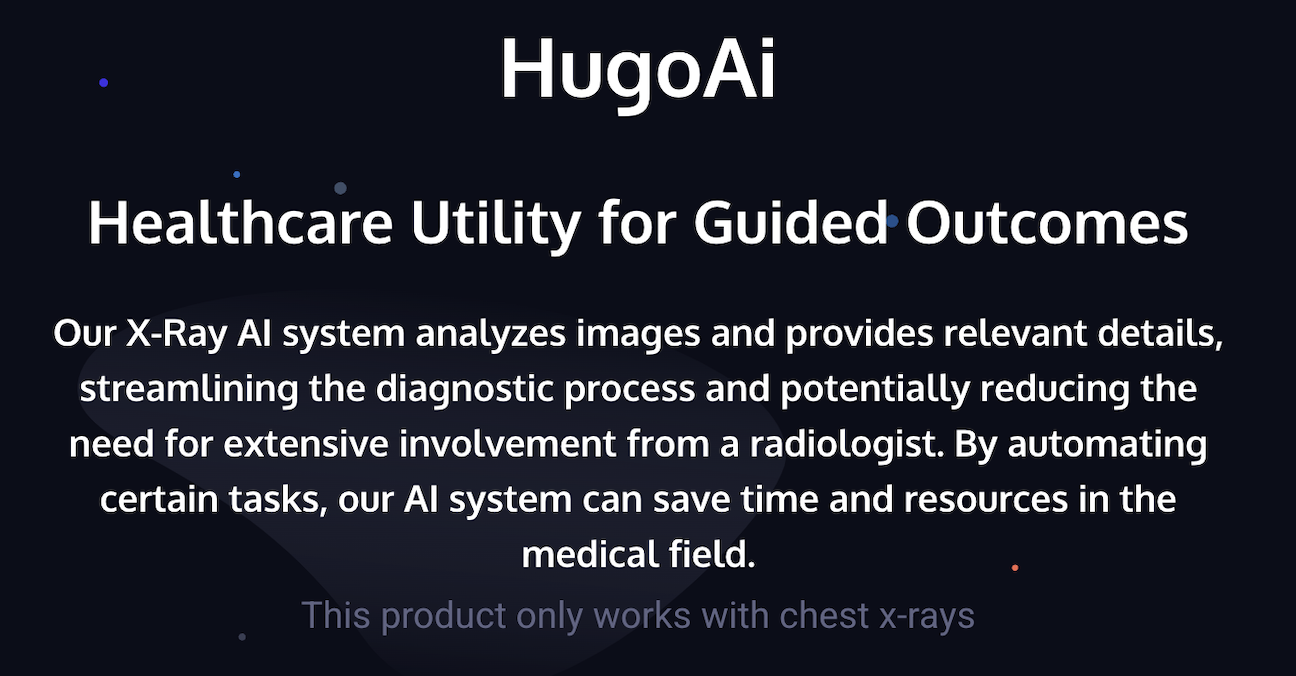AI Mentoriship Project
 Hugo AI
Hugo AI



-
Faris Shaik
-
Varun Raghuram
-
Arrio Gonsalves
-
Sanya Oak
-
Anusha Saha
-
Poorna Bharanikumar
Acknowledgements
I would like to extend a special thanks to my fellow mentees Faris Shaik, Varun Raghuram, Arrio Gonsalves, and Sanya Oak for their dedication and collaboration. I am also incredibly grateful to my mentors Anusha Saha and Poorna Bharanikumar for their guidance and support in making this project a success.
Check out our code and learn more about the project on my github.
This project was executed under the Artificial Intelligence Mentorship Program at the University of Texas at Dallas. Our team of seven members, comprising Shaik Hatim, Faris Shaik, Sanya Oak, Varun Raghuram, and Arrio Gonsalves, along with our mentors Anusha Saha and Poorna Bharanikumar, created four simple chest X-ray models. These models can detect pathological conditions, age, gender, and viewing positions. The project spanned over a six-week program where we delved into AI and Machine Learning.
The models were initially designed to detect pathological conditions. However, with some tweaking, they can easily be extended to cover the other three areas.
The models were implemented as a web application using HTML, CSS, and JavaScript. Google Colab was used as the development environment.
The project is hosted on Digital Ocean, which provided us with valuable learning experiences about cloud server management, security, and deployments. Our journey with Python version management was particularly insightful. Given that our models were Python version-specific, we needed to ensure the correct version of Python (3.8.10) was installed and available. We encountered challenges initially but overcame them by setting up a virtual environment (venv) using pyenv. This isolated environment allowed us to work with the required Python version without conflicts.
We used the Flask framework to develop the backend of our application. Flask’s simplicity and flexibility allowed us to set up a web-based API that managed the execution environment for our models. In our Flask application, we defined routes for image upload and implemented methods to serve model predictions. We also ensured secure handling of image files. The predictions were generated using multiple models (pathological condition, gender, age, and viewing position classifiers) from the fastai library, which were loaded into the application at startup. These predictions were then returned to the client as a JSON response.
An additional major challenge was handling the extensive dataset sourced from Kaggle. We initially attempted to use S3 for this purpose but were unsuccessful due to the time and processing requirements. Consequently, we condensed the dataset into a 30k image sample set, which accurately represents the original data.
From configuring Python environments to managing firewall settings and understanding the essentials of web servers with Nginx, the application’s deployment gave us real-world insights into server administration. We also worked with SSL certificates and domain mapping, redirecting the IP address to our chosen domain.
Digital Ocean’s robust and easy-to-use platform made it feasible to handle a high-traffic web application powered by AI models. Unfortunately, we had to terminate the live site as it used up our resources. However, feel free to browse through our demo here.
